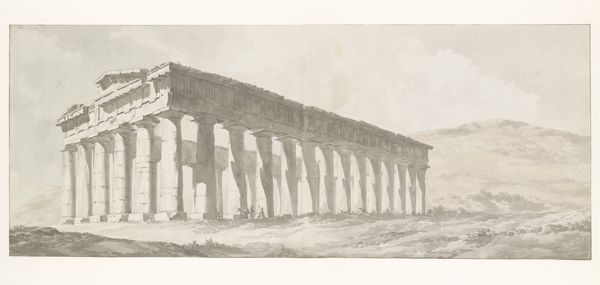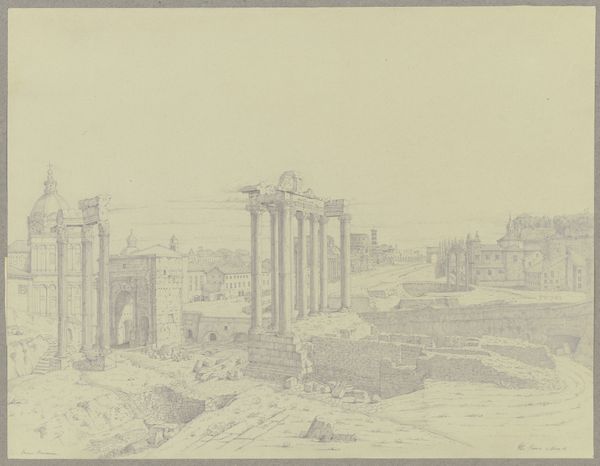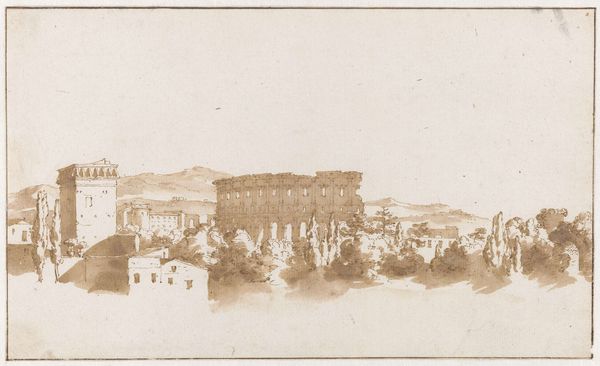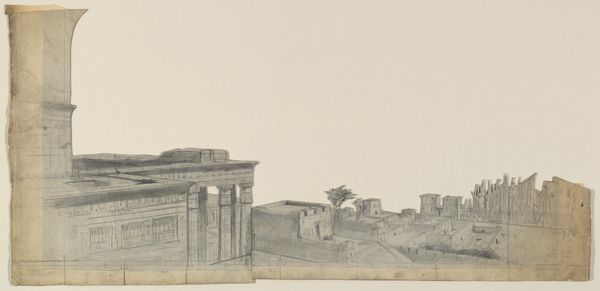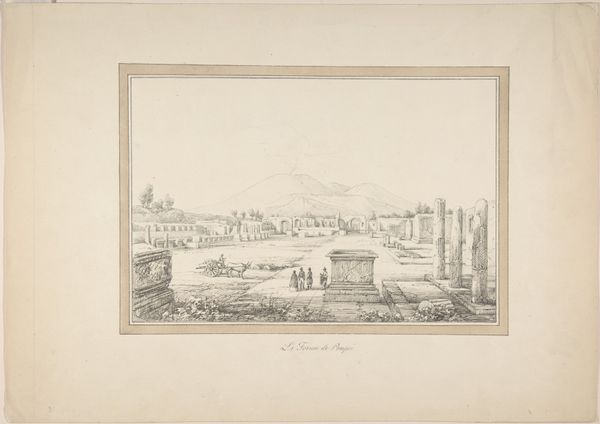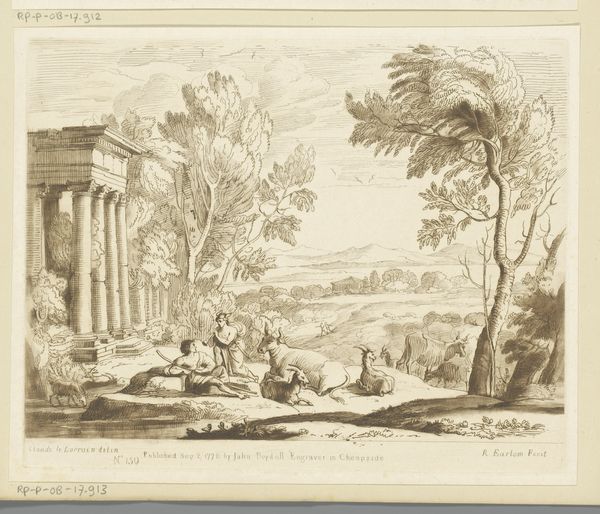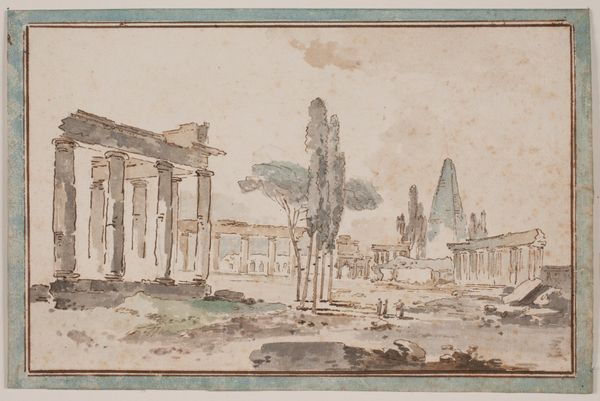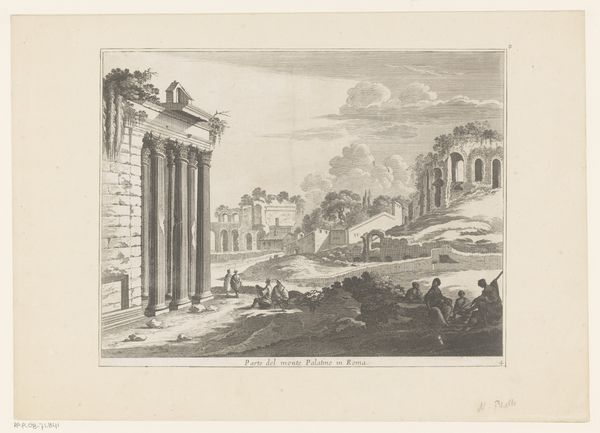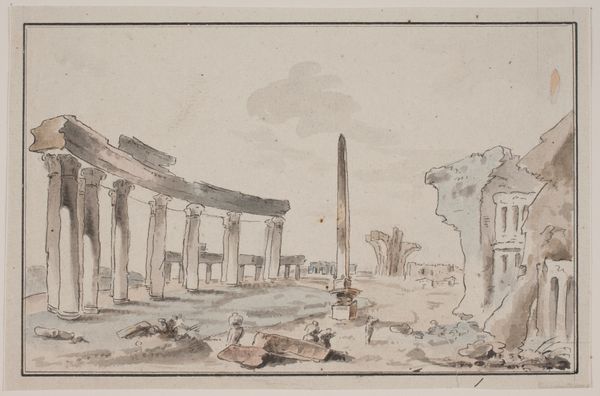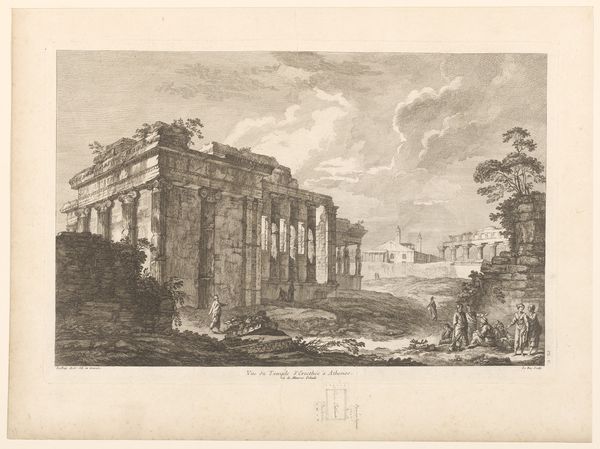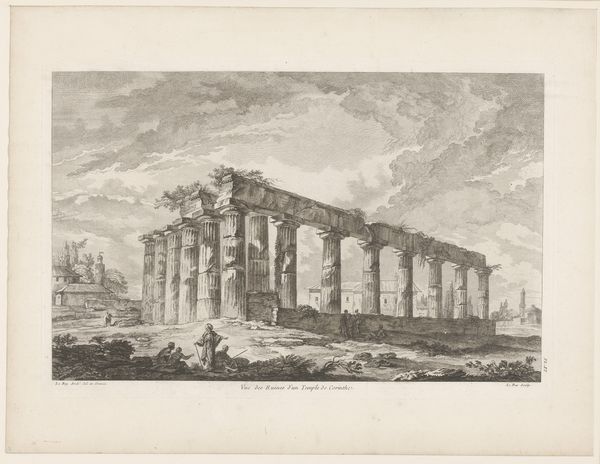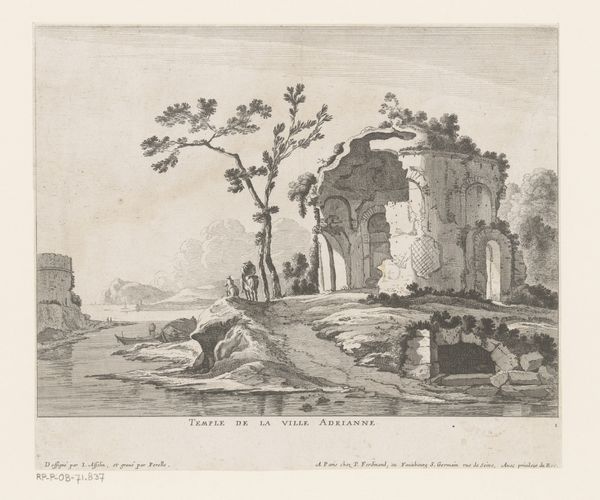
drawing, print, gouache, paper, pencil, graphite, architecture
#
drawing
# print
#
gouache
#
pencil sketch
#
greek-and-roman-art
#
landscape
#
classical-realism
#
paper
#
pencil
#
graphite
#
academic-art
#
architecture
Dimensions: 201 × 286 mm
Copyright: Public Domain
Editor: Here we have William Leighton Leitch's drawing, simply titled "Pesto", made using graphite, gouache, and pencil on paper. There's a hazy, almost dreamlike quality to the ancient architecture depicted. What do you see in this piece? Curator: The use of graphite and gouache reveals a stratified process, a careful layering. I wonder, how did Leitch's choice of these particular materials influence the reception of classical subjects within the art market of his time? It seems he’s deliberately presenting 'high art' through means traditionally associated with sketches and preparatory studies. Is this a form of artistic democratization? Editor: That's fascinating! I hadn't thought about the tension between the subject matter and the media used. So, it’s not just *what* is depicted, but *how* it’s depicted. Curator: Precisely. Consider also the implications of producing such works as 'prints,' suggesting wider distribution and consumption. Was Leitch challenging established notions of artistic value through the methods he employed to reproduce the work? Editor: So the piece isn't just about aesthetic beauty or historical reverence; it’s a commentary on the means of artistic production and the art market itself. Curator: Exactly! Think about the role of the artist’s hand in producing something seemingly 'classical.' What’s gained, and perhaps what's lost, when this kind of image becomes easily reproducible? Editor: I’m beginning to see how the very materials and the printing process influence our interpretation of this seemingly straightforward landscape. It makes me consider the social life of the artwork. Curator: It prompts us to challenge assumptions about artistic hierarchies, craft versus fine art, and value in a world increasingly shaped by mass production and reproducibility. It is as if he were creating "fast art" for popular consumption using traditional classicist imageries. Editor: I appreciate this viewpoint. I will certainly look at the art with a much wider scope now.
Comments
No comments
Be the first to comment and join the conversation on the ultimate creative platform.
